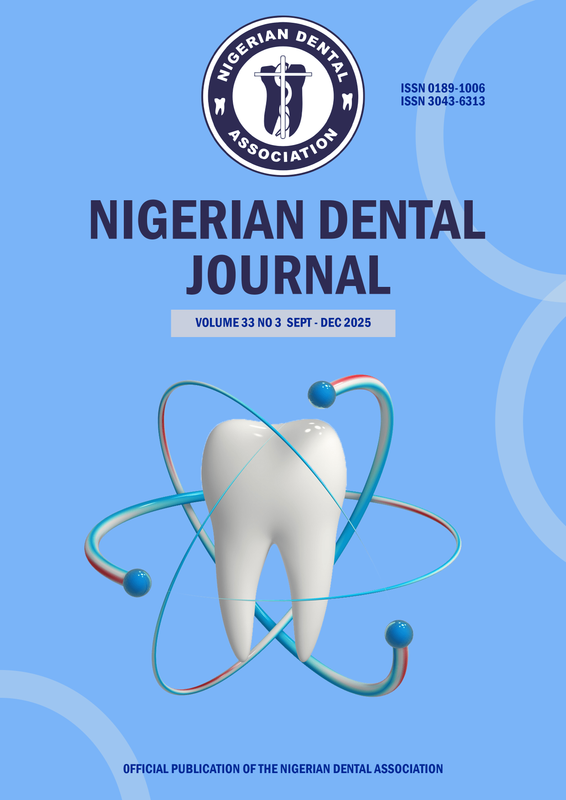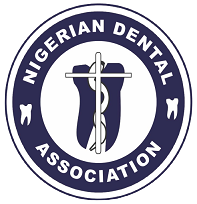Malocclusion and occlusal traits among orthodontic patients seen at the University of Benin Teaching Hospital, Nigeria
DOI:
https://doi.org/10.61172/ndj.v18i1.151Keywords:
Malocclusion, Occlusal traits, Orthodontic patients, Benin City, NigerianAbstract
Objective: The aim of this study was to determine the prevalence and trend of malocclusion and occlusal traits among orthodontic patients in Benin City.
Method: One hundred and thirty one patients, consisting of 71 females (54.2%) and 60 males (45.8%) aged 5 - 44 years (mean 17.9 ± 7.5 years) who presented for orthodontic treatment at the University of Benin Teaching Hospital Dental Centre were assessed for sagittal molar occlusion, overjet, overbite, crossbite, open bite, crowding, spacing, median diastema, midline shift, malformed and supernumerary teeth, displaced, unerupted and impacted teeth. Statistical gender differences in the occlusal traits were evaluated with the chi-square test.
Result: The results revealed high prevalence of Angle's class I malocclusion (71.8%), while 9.9% of the subjects had Angle's Class II division 1, 7.6% had Angle's Class II division 2 and 10.7% had Angle's class III malocclusion. An increased overjet greater than 3.5mm was observed in 43% while increased overbite was observed in 25.2%. Anterior open bite was seen in 8.4% while 21.4% and 12.2% had anterior and posterior crossbites respectively. Midline shift was present in 29.8%, crowding of both upper and lower anterior segments was observed in 47.3%, spacing in the upper and lower anterior segments was present in 22.1%, and midline diastema was observed in 21.4%. No statistically significant gender differences were observed for any of the occlusal variables evaluated (P>0.05).
Conclusion: This study revealed high prevalence of class I malocclusion, increased overjet and crowding among the orthodontic patients seen in Benin City, Nigeria.
Downloads
Downloads
Published
Issue
Section
License
Copyright (c) 2010 E. O. Ajayi, I. N. Ize-Iyamu

This work is licensed under a Creative Commons Attribution 4.0 International License.
Open Access Statement
- We became fully Open Access since January 2023.
- Our new and archived materials are available free of charge on open basis and under a Creative Commons license as stated below.
Copyright statement
Copyright © 1999 The authors. This work, Nigerian Dental Journal by Nigerian Dental Association is licensed under Creative Commons Attribution 4.0 International License.

